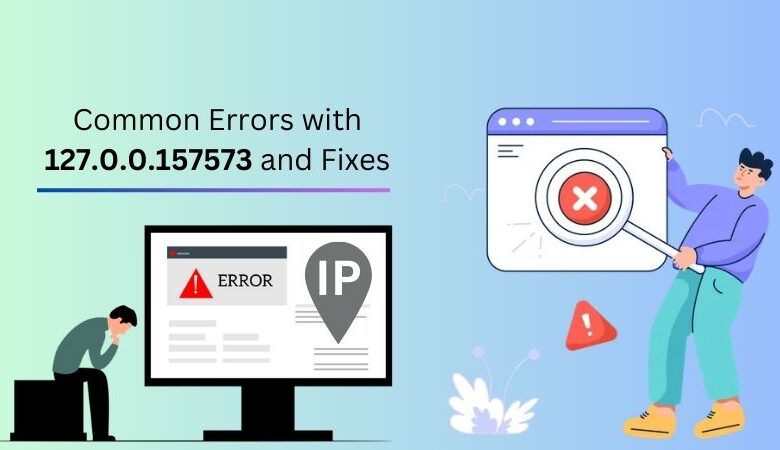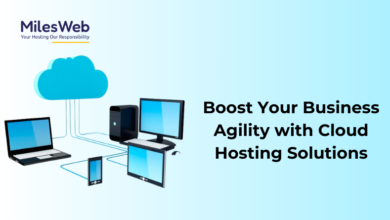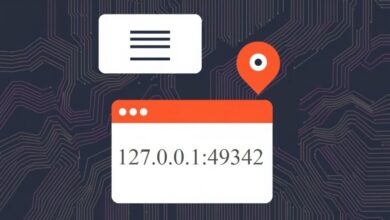What Is 127.0.0.157573? Explained: Errors and Solutions

The error “Unable to connect to host 127.0.0.1 on port 57573” means that your software cannot connect to something that run on your own computer. This usually happens when your testing software (like Selenium) does not match the browser that you are using currently. Essentially, connections on your computer make use of a special address called 127.0.0.1 and a specific port number (like 57573) to work.
To fix the problem, you will need to make sure that your testing software and browser are compatible and that the port number your application is using is set correctly. This is important for developers to test things properly before releasing them to the public. Keep on reading to know more.
What is 127.0.0.1:57573?
The error message “127.0.0.1:57573” indicates a problem that connects to a local server. This means that your program which is designed to use port 57573 to communicate with clients cannot establish a connection. This usually happens when there is a mismatch between software versions or system configurations which prevent communication. You can think of it like trying to use a foreign charger with a different socket but they just do not fit.
Developers often use “localhost” which is the same as the IP address 127.0.0.1 to test programs on their own computers but if something is wrong with the setup like incompatible versions of a browser automation tool like Selenium, the connection can fail. These errors point towards a deeper issue with how your system or software is set up which means that you likely need to investigate the compatibility between the various software components involved.
Common Cause for Error
This error usually means something is not working right on your computer. It is like trying to call a friend and they are not picking up. The thing that is supposed to be running on your computer is not answering and that is causing the problem. There are many reasons why this could happen which are as follows:
- The Service Is Not On: The service that is supposed to be working on port 57573 might not be turned on or it might have stopped working.
- Something Else Is Using the Port: Another program might already be using port 57573. It is like someone else is parked in your parking spot. For example, port 80 is a very common port for websites and might be in use by another application.
- Firewall or Antivirus is Blocking: Your security software (firewall or antivirus) might be preventing the connection because it thinks the server is not safe.
- Wrong Port Number: You might be trying to connect using the wrong port number. Make sure that you are using the correct number (57573) and no other program is using it.
- Not Enough Access: The program might not have permission to use the files or folders it needs to work correctly.
- Network Problems: There could be issues with your network setup, maybe with something called loopback interfaces that are making it difficult for devices on the network to connect with each other.
Troubleshooting Steps
Check Security and Firewalls
- Open Port 57573: Make sure that your firewall allows connections through port number 57573.
- Turn Off Security Software Temporarily: Disable your antivirus or security programs for a short time to see if they are causing the problem.
Check How the Application is Set Up
- Port Check: Use Netstat to confirm that nothing else is using port number 57573.
- Program Settings: Double-check that your program is correctly set up to use port number 57573.
Look at Your Computer’s Performance - Watch System Performance: Use task manager or resource monitor to find any problems with your computer’s performance.
- Upgrade Computer Parts: If your computer is slow because it is old or does not have enough resources, consider upgrading its hardware.
Check Network Settings
- Proxy Settings: Ensure that your proxy settings are not blocking connections to your own computer (localhost).
- Restart Network: Sometimes resetting your network connection can fix issues.
Test Local Web Applications
- Run Local Web Apps on 127.0.0.1:57572: Host and run your web apps locally at this address to test both the front-end and back-end parts together. Note that this step uses a different port (57572) than the previous checks.
Create and Test APIs
- Develop and Test APIs Locally: Building and testing your APIs locally is the best way to make sure that they work well with other systems.
A Complete Guide to 127.0.0.149342 – Localhost IP Address for Developers
What is 127.0.0.1:57573 Used For?
This setup is commonly used for testing and developing software on your own computer. By using a special address and port number (like 57573), your computer can communicate with itself. This allows developers to run services locally which is helpful for testing applications before they go live. For example, in web development, you can test your website in a safe environment before deploying it publicly.
This approach is also useful for building and testing APIs without the need of external connections. By running services on port 57573, you can isolate any issues from your public-facing systems which make troubleshooting easier. It also allows you to run multiple services simultaneously on different ports without conflicts which is especially beneficial for modern software designs that use many small services.
Types of 127.0.0.1 Errors
Have a look below to know what might happen:
- 127.0.0.1:49342: If you cannot connect using this address and port number, it is usually occurs when something blocks the connection. This can be your computer’s firewall or another program using the same port.
- 127.0.0.1:62893: Similar to the previous example, connection issues here usually relate to permissions or the port being in use by something else. It is important to check that the software you are trying to connect has the necessary access and the port is actually free.
- 127.0.0.1:7860: Errors on this particular port typically mean that another program is already using it. This creates a conflict and prevents a new connection from being established.
- 127.0.0.1:8080: This is a common port for web servers. If you are having trouble with it, it might indicate that another application has taken it over or there is a software incompatibility issue.
In general, these types of errors usually come from a few key problems like conflicts over which program gets to use a specific port, overly restrictive firewall settings, or authentication issues. To fix these issues, you will need to verify that the port you are trying to use is available, adjust firewall settings to allow the connection and confirm that no other application is interfering with the expected port.
Real World Examples and Case Study
Common reasons for error 127.0.0.1:57573 are as follows:
-
Web Server Trouble:
Imagine you are setting up a small website on your computer. Sometimes, the program that lets it work (the server) gets confused, like having the wrong settings or trying to use a port someone else is already using.
-
Database Connection Issues:
Your website usually connects to the database for information. If the password is wrong or if the port to the database is blocked, they cannot connect.
-
Docker Problems:
Docker is like a container for your app. If it is not built correctly or the port it is trying to use is busy, your app inside the container will not start.
-
API Testing Failures:
APIs are ways for different parts of an app to communicate. If the API server is not running or is not set up right, you cannot test it.
-
Firewall Interference:
Your computer’s firewall is like a security guard. Sometimes it blocks your own app because it thinks it is dangerous especially if it is trying to use a specific port.
-
Port Conflicts:
Ports are used by programs use to connect with others. If two programs try to use the same port, both will fail.
-
Proxy Issues:
If a proxy is set up wrong or broken, your app might not be able to access the internet or other services.
-
Framework Configuration Mistakes:
If you do not set the frameworks correctly or if they cannot start their server, the app will have problems on your computer.
-
Virtual Machine Networking Problems:
Virtual machines are located inside your computer. If their network settings are wrong, they cannot connect to your main computer or services.
-
IoT Device Setup Headaches:
IoT devices need to connect to servers. If the server is not running or there is a network error they will not work.
Results and Benefits
By using this dedicated port as their API, developers have significantly improved their workflow. This approach has allowed them to:
- Test Independently: Verify the API’s functionality through isolated tests.
- Develop Faster: Make rapid changes and iterations without deployment delays.
- Collaborate Effectively: Work seamlessly from their local environments which enhance teamwork.
Ultimately, this port-based API has led to a more efficient development process, stronger team collaboration and a more robust final product.
Conclusion
The error “127.0.0.1:57573” usually means something is blocking your connection. This can be conflicts with other programs using the same port, permission problems or your firewall. Fixing these connection issues is key. This port is often used for development because it offers a safe space to build and test apps without messing with live websites. Web developers and IT folks need to know how to use it properly. By following best practices for local development, they can become more efficient and create better apps.
This article has highlighted the resolution of 127.0.0.1:57573 error that can be addressed by identifying root causes including port conflicts, permission issues and firewall prohibitions. A good way to solve this is by dealing with connection problems which arise when addressing these issues in particular.
It is imperative that web developers and IT personnel know how to use this port number, the key reason being that it has a secure, sandboxed, and efficient environment for developing, testing and tuning applications without causing any interference with live systems. Consequently, in order to enhance productivity as well as develop good-quality apps, there are best practices in local development that developers should follow.





